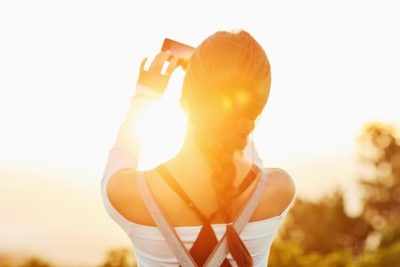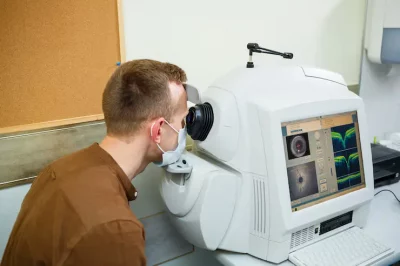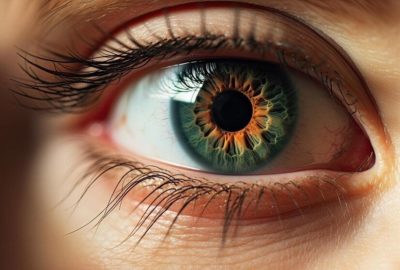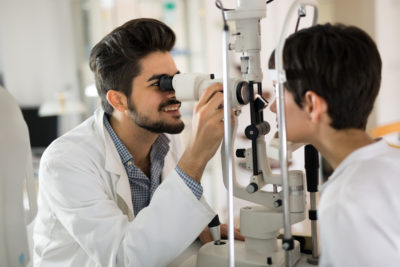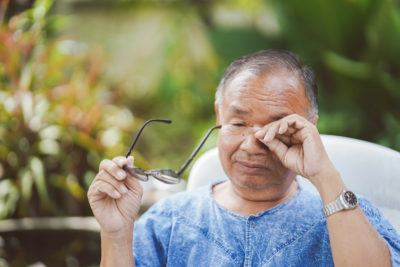Understanding Solar Retinopathy: How Sunlight Can Harm Your Retina
Have you ever found yourself gazing at the sun for an extended period? If so, you might have noticed a minor distortion or blurring of your vision after that. That can be a sign that you have eye damage. The condition is called solar retinopathy, and it happens when the sun’s rays damage the area of your eye that permits clear vision. It might result in irreversible blindness. Remember this the next time you are tempted to stare at the sun: it is not worth risking your vision for a momentary view.
What is Solar Retinopathy?
When exposure to sunlight damages the delicate tissues of the retina, which is located in the back of the eye, the condition known as solar retinopathy develops. Unlike a fleeting glance, staring directly at the sun can permanently damage your vision, particularly at unique occasions like solar eclipses.
When the retina is exposed to intense sun radiation, it can develop solar retinopathy. The macula, the portion of the retina in charge of crisp, centre vision, receives light from the sun through the lens of the eye. The retinal tissues may sustain thermal burns or photochemical damage as a result of intense sunlight. Anyone who looks directly at the sun, especially during a solar eclipse, may be affected by this disease if they believe that a little exposure won’t be harmful.
What are the Symptoms of Solar Retinopathy?
The symptoms of solar retinopathy frequently appear within hours of sun exposure and may include:
- Blurred vision: The central vision becomes blurry, making details difficult to see.
- Distorted eyesight can cause straight lines to look wavy or twisted.
- A blind spot in the centre of the visual field – This is sometimes the most visible symptom.
- Colour vision may be changed causing colours to look less vivid than usual.
- Light sensitivity: Increased discomfort in bright lighting.
Importantly, these symptoms can appear in both eyes, although they may differ depending on the exposure.
Who Does Solar Retinopathy Affect?
Solar retinopathy is a condition caused by direct exposure to intense sunlight or other bright light sources, leading to damage to the retina. While anyone can potentially develop solar retinopathy, certain groups are at a higher risk due to specific behaviors or circumstances. Here are the individuals most affected:
1. People Watching Solar Eclipses
Viewing a solar eclipse without proper eye protection is one of the most common causes of solar retinopathy.
The reduced brightness during an eclipse can trick individuals into looking directly at the sun, exposing their retina to harmful ultraviolet (UV) and infrared radiation.
2. Individuals with Unsafe Sun-Gazing Practices
Those who practice sun-gazing or stare at the sun for religious or meditative purposes without adequate protection are at significant risk.
3. Young Adults and Adolescents
Younger individuals may engage in risky behaviors, such as looking at the sun out of curiosity or for photography purposes, unaware of the potential harm.
4. People Using Incorrect Eye Protection
Improper or substandard solar filters, sunglasses, or unverified eclipse glasses can fail to block harmful rays, increasing the risk of retinal damage.
5. Individuals Exposed to Intense Artificial Light
People exposed to intense light sources like welding arcs or laser beams without protection may also experience symptoms similar to solar retinopathy.
What are the Risk Factors of Solar Retinopathy?
Solar retinopathy can affect everyone who looks at the sun without proper eye protection or sunglasses. However, several situations will enhance the likelihood of occurrence:
- Viewing a solar eclipse without ISO-certified eclipse glasses.
- Observing the sun with optical instruments such as telescopes or binoculars without the use of adequate solar filters.
- Sungazing without proper protection.
Solar retinopathy occurs when the retina is damaged by prolonged exposure to intense light, particularly from the sun or artificial light sources. Certain behaviors, conditions, and environmental factors increase the likelihood of developing this condition. Here are the key risk factors:
1. Prolonged Sun-Gazing
Looking directly at the sun, especially during events like solar eclipses, without proper eye protection is the most significant risk factor.
2. Viewing Solar Eclipses Without Proper Protection
During a solar eclipse, the sun’s reduced brightness can lead to prolonged exposure, causing severe retinal damage.
3. Lack of Protective Eyewear
Using inadequate or uncertified protective eyewear, such as regular sunglasses or unverified solar filters, fails to block harmful ultraviolet (UV) and infrared rays.
4. Young Age
Younger individuals, especially children and teenagers, are at higher risk due to curiosity and unawareness of the dangers of sun exposure.
5. Exposure to Intense Artificial Light Sources
Welders, laser technicians, or individuals exposed to powerful artificial lights without protective gear are also susceptible to retinal damage.
6. Geographical Location
Individuals living in areas with high sun exposure, such as near the equator or at higher altitudes, are more likely to be at risk.
7. Underlying Health Conditions
Conditions like macular degeneration or a thinner retinal structure may increase vulnerability to light-induced damage.
8. Recreational Risks
Activities such as sunbathing, outdoor sports, or photography without proper eye protection can inadvertently expose the eyes to harmful light.
What are the Diagnosis and Treatment of Solar Retinopathy?
Solar retinopathy is diagnosed after a comprehensive examination by an eye care specialist. This typically includes:
- A visual acuity test is used to determine whether or not someone has impaired vision.
- Fundus photography captures precise photographs of the retina.
- Optical coherence tomography (OCT) is a non-invasive imaging diagnostic that uses cross-sectional images of the retina to detect damage.
- Currently, there is no specific treatment that can repair the damage caused by solar retinopathy. Most care options focus on treating symptoms and letting the eye heal on its own, which can take weeks to months. In rare circumstances, visual impairment could be permanent.
What are the Prevention of Solar Retinopathy?
- Never look directly at the sun, especially during a solar eclipse, without wearing appropriate eye protection.
- To observe the sun directly, use ISO-certified solar viewing glasses. These glasses are intended to shield your eyes from dangerous sun radiation.
- Do not use handmade filters or sunglasses, as they do not provide appropriate eye protection.
- If you want to see or picture the sun directly, use adequate solar filters on your telescopes or cameras.
While solar events such as eclipses are interesting, they can also pose serious threats to our vision if not handled carefully. Solar retinopathy is a preventable disorder, and raising awareness is essential for ensuring that people can enjoy celestial phenomena safely.
We can preserve our vision while yet enjoying the glories of the sky by taking adequate precautions and educating people about the dangers of looking straight at the sun.
